Tamron SP 70-300 mm f/4-5.6 Di VC USD
8. Vignetting
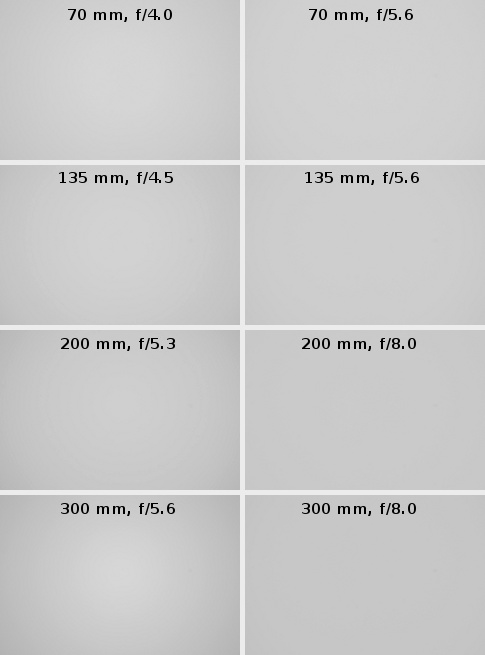
Practically in the whole focal range the vignetting is small or imperceptible. At the shortest focal length and maximum relative aperture this aberration won’t be noticed at all because it amounts to just 9% (-0.26 EV). Identical value is obtained at 135 mm. A slight increase of vignetting can be seen at 200 mm because there, at the maximum relative aperture, it is 11% (-0.35 EV) and it decreases to 2% on stopping down to f/8.0. The biggest chances to notice vignetting we have at 300 mm focal length where, at the maximum relative aperture, its value we determined as 16% (-0.50 EV). The problem disappears completely by f/8.0 where the vignetting decreases to just 3%.
Please Support UsIf you enjoy our reviews and articles, and you want us to continue our work please, support our website by donating through PayPal. The funds are going to be used for paying our editorial team, renting servers, and equipping our testing studio; only that way we will be able to continue providing you interesting content for free. |
- - - - - - - - - - - - - - - - - - - - - - - - - - - - - - - - - - - - - - - - - - - - - - - -
Now let’s check the situation on full frame.
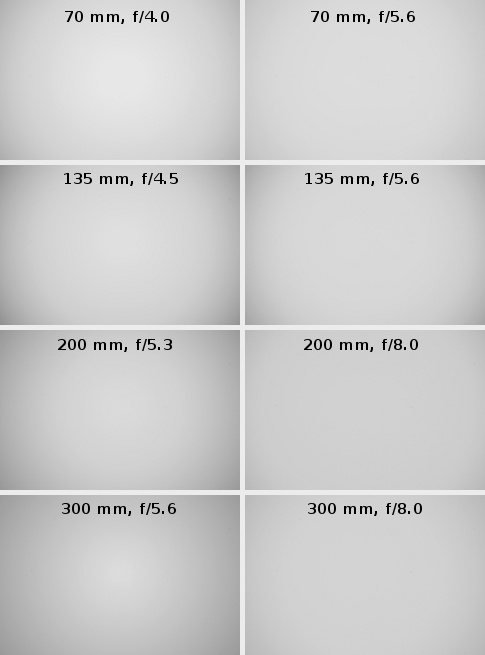
The light fall-off in the corners is now fully visible. Fortunately the values we get are not the highest. For the combination of 70 mm and f/4.0 the vignetting amounts to 23% (-0.77 EV) and becomes practically imperceptible by f/5.6, where it decreases to 12%. On stopping down by one more stop we see this aberration decreasing by additional 5%.
At 135 mm focal length there is a noticeable escalation of problems – at the maximum relative aperture the vignetting reaches 33% (-1.17 EV). On stopping down to f/5.6 and f/8.0 we see this value decrease to 23% and 13% respectively. The aberration disappears completely only by f/11, where it amounts to 7%.
At 200 mm the results are a bit better again. By f/5.3 aperture the vignetting gets to 29% (-1.00 EV) and by f/5.6 it decreases further by 2% Implementing of f/8.0 aperture makes this aberration decrease to the level of 11%.
Very similar values we had at 300 mm focal length. Here, at the maximum relative aperture, the brightness loss in the frame corners was 29% (-0.97 EV). By f/8.0 this aberration decreased to 12% and it became imperceptible by f/11.
What’s interesting these results are worse than those of the Sigma70–300 mm OS which is, after all, physically much smaller than the Tamron. It’s worth reminding here, though , that the Canon 70-300 mm IS on full frame could have vignetting of even 45-46% so the Tamron compares favourably with it.
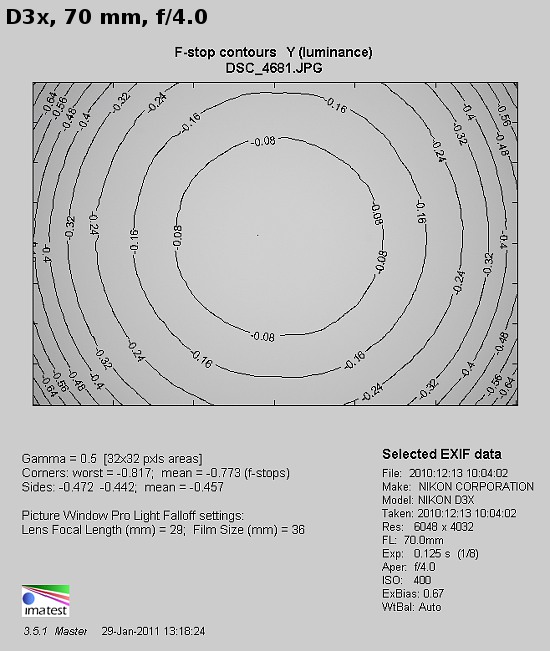 |
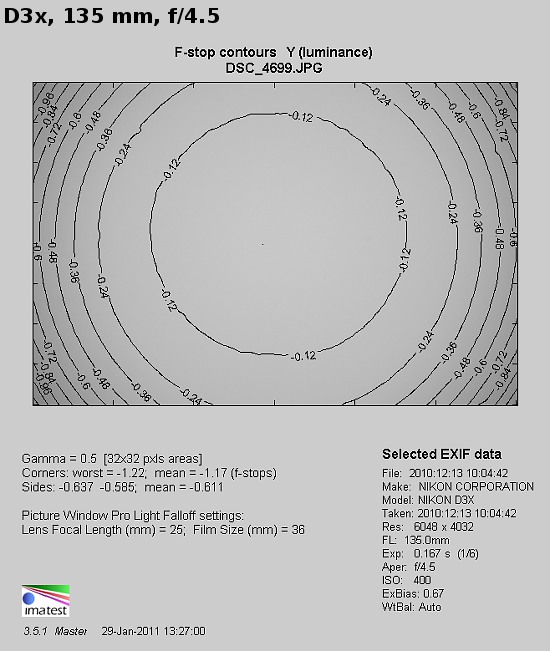 |
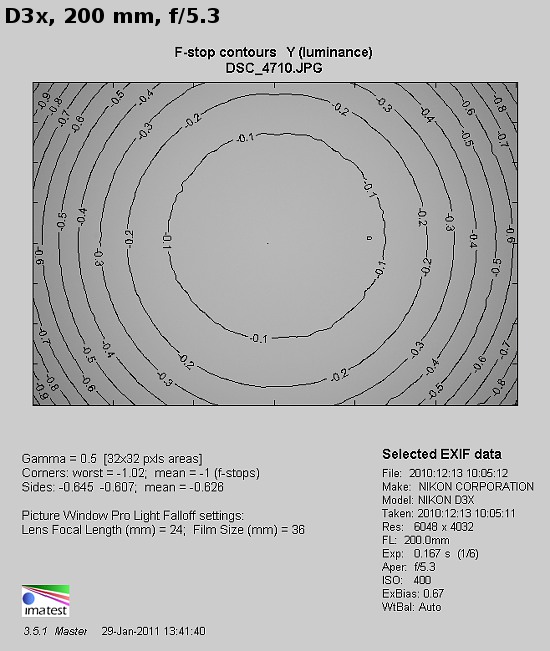 |
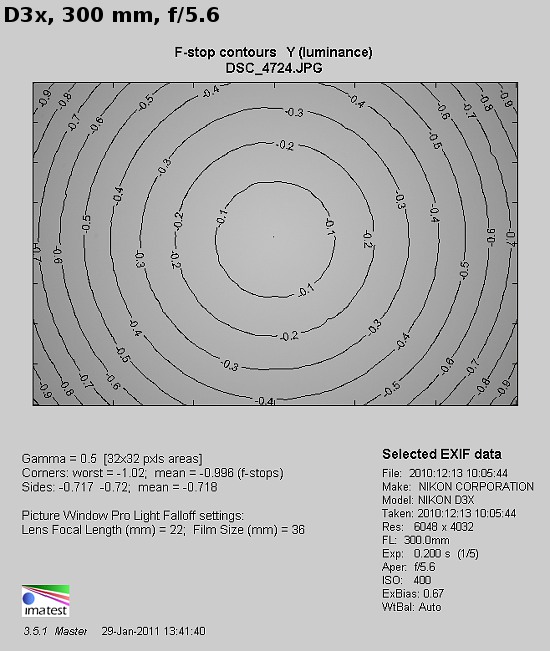 |






